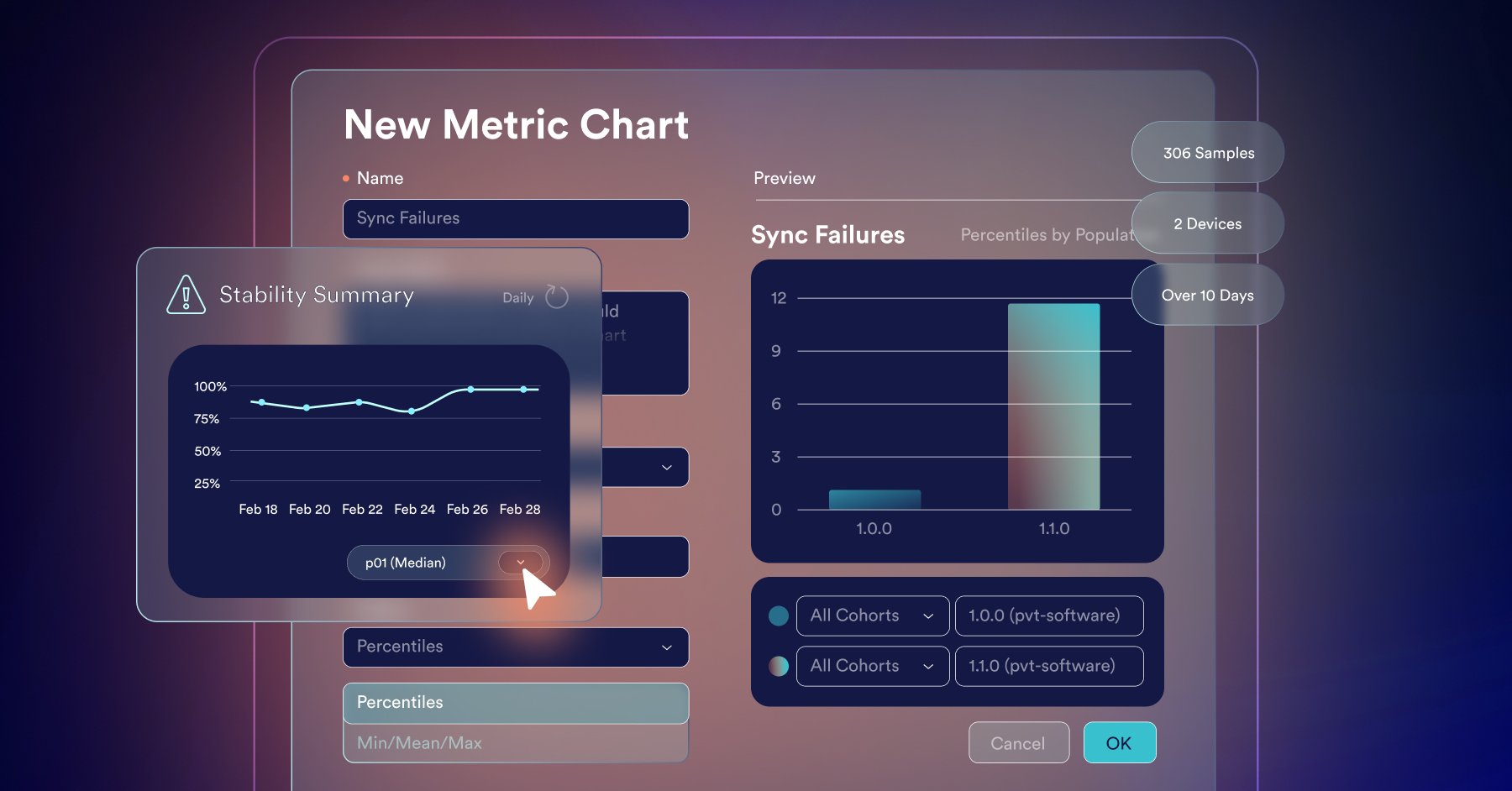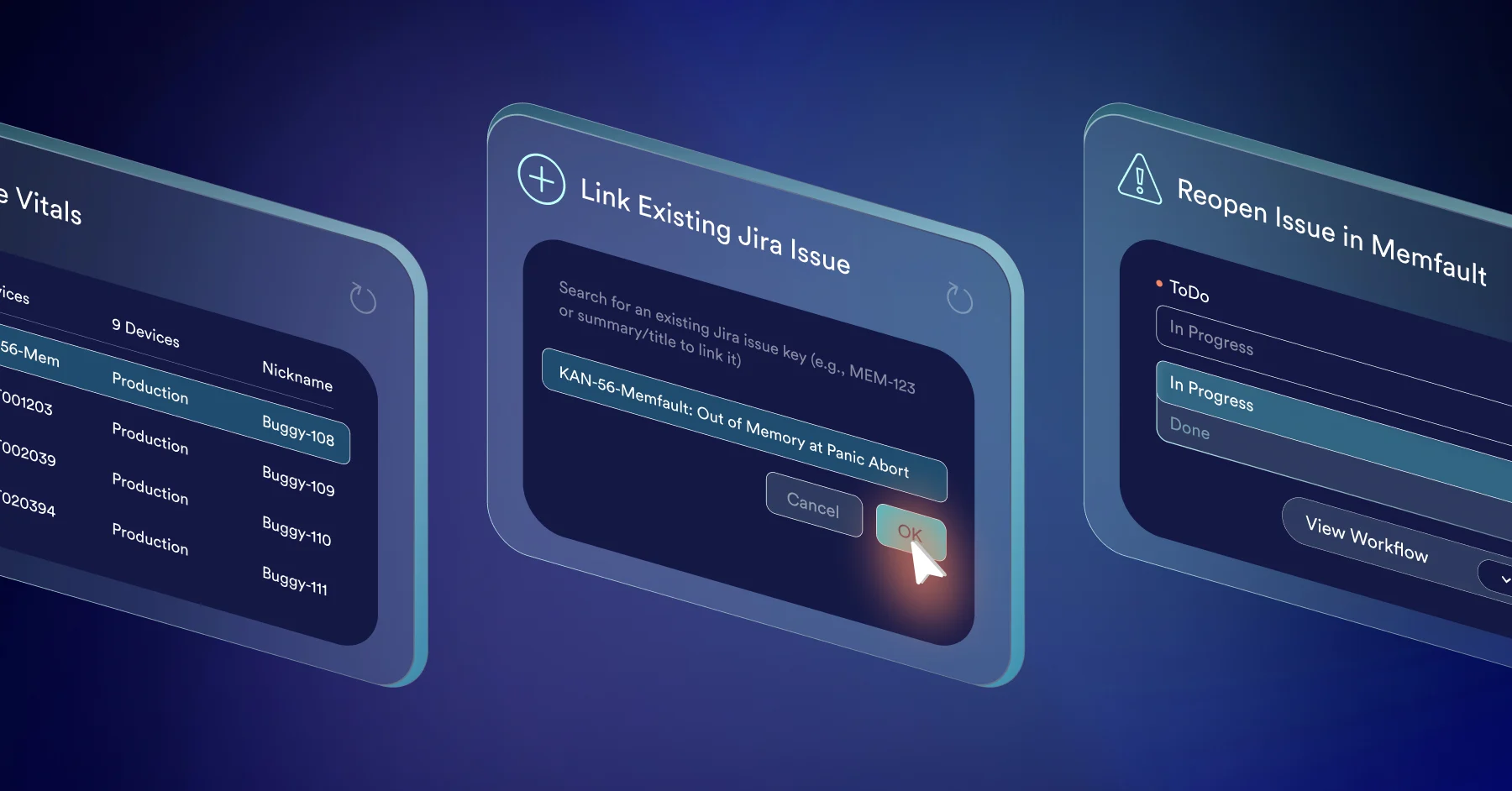Share
For this launch week, our big focus was introducing Product Analytics and a whole set of new features that unlocks new possibilities for IoT devices. Now, Memfault can not only help teams build the most reliable devices, but we can also help them understand in detail how those devices are used in the field and apply those insights to make their products great.
If you missed it, check out our Q&A session with Memfault’s CEO and co-founder, François Baldassari, and VP of Product, Heiko Behren.
The conversation dove into Product Analytics looks under the hood, why we built it, and what customers can gain from the new capabilities.
Launch Week Celebrations
Check out the following run-down of the releases we unveiled this week…and get a sneak peek of what’s next.
Building a Single Source of Truth for Embedded Devices
Product Analytics builds on last quarter’s work, when we introduced Device Vitals and improved our dashboarding and analytics capabilities to make it easier for development teams to collect, visualize, and understand critical health information from their devices.
Our latest release continues in the same theme. New features include:
- Sessions: A new way to capture targeted information about device usage
- Device Filters: Segment data in your dashboard based on device characteristics like location, production batch, serial number, etc.
- Advanced Charts: Further segment your data based on feature usage, battery condition, connectivity status, and more
Memfault is truly becoming the single source of truth on product usage and device health and performance for the entire embedded development team.
But that’s not all we have been up to!
Improving Speed and Efficiency
Embedded teams face time and resource pressures to deliver IoT projects. We saw this clearly in our recent State of IoT Software Development report, which found that nearly 1/3 of projects are behind schedule. The thought of allocating time to integrate a new tool like Memfault can seem daunting, despite the benefits.
That’s why we continue to focus on making the integration process as fast and efficient as possible. We released two big updates to drive speed and efficiency forward.
1. QuickStart
This quarter, that commitment to speed and efficiency was demonstrated in the launch of our QuickStart program.
QuickStart is a combination of changes to the SDK’s, improved documentation, and a streamlined in-app onboarding experience. Together, these enhancements make it possible to integrate Memfault in literally minutes on QuickStart supported set-ups.
If you haven’t yet tried Memfault out on your development device, there has never been a better time! Explore the list of supported embedded device architectures and try it free for 30 days. You can find more details and demos in our QuickStart blog.
Golioth Pipeline Integration
We also announced a new Golioth Pipelines integration. Having recently released their new Pipelines data routing feature, we were delighted to be the first out-of-the-box integration for Pipelines, allowing Golioth customers to route data to Memfault easily.
We are big fans of the simplicity of the solution and the benefits it offers to constrained IoT devices, helping get data off those devices efficiently so that developers get what they need to develop and maintain a great product but without impacting the performance of the device itself.
What’s next?
Now that Launch Week has come to an end, it’s time to look forward. The team is already hard at work building the next set of exciting features.
Over the first half of this year, a lot of customers and the industry have talked about the increasing presence of regulation and compliance in the embedded world. The EU’s Cyber Resilience Act (CRA) is the most prominent example, but other similar requirements are emerging across the world. Companies are going to have to get serious about security for their IoT devices—not just in design, but in deployment as well.
The requirements IoT security regulations are driving can be simplified into three broad themes:
- Secure design of both hardware and software components
- Visibility of vulnerabilities and issues in the field so that they can be reported to end users
- OTA updates that enable teams to quickly and efficiently resolve security vulnerabilities and issues in the field
Memfault can play a key role in helping companies meet these compliance requirements, and we intend to focus on making sure our product is well-equipped to support our customers through this change.
We can’t provide too much more detail yet…but we encourage you to connect with us on LinkedIn and X if IoT security is already something you are thinking about. We’ll share more soon…
To close this out, I want to extend a hearty thanks to our customers for helping us continue to shape Memfault, and to the Memfault team who have been working tirelessly to make it all happen.
Until next time!




